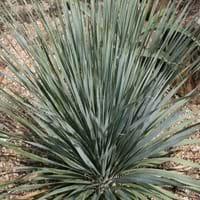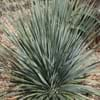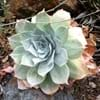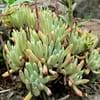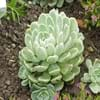Life Span
Perennial
Annual and Perennial
Type
Cactus or Succulent
Bulb or Corm or Tuber
Origin
Southwestern United States, Mexico
Central America, South America
Types
Dasylirion acrotrichum, Dasylirion berlandieri, Dasylirion cedrosanum
Vine, Flowering plant
Number of Varieties
Not Available
Habitat
Desert, Dry areas, Rocky areas
All sorts of environments, Along Railroads, Banks, Moist Ditches, Roadsides, rocky banks of streams
USDA Hardiness Zone
12-15
10-13
Sunset Zone
10, 11, 12, 13, 14, 15, 16, 17, 18, 19, 20, 21, 22, 23, 24
21,22
Habit
Rosette/Stemless
Vining/Climbing
Minimum Width
Not Available
Flower Color
Yellow
Purple, Rose
Flower Color Modifier
Not Available
Bicolor
Fruit Color
Tan
Not Available
Leaf Color in Spring
Green, Blue Green
Purple, Dark Green, Black
Leaf Color in Summer
Green, Blue Green
Light Green
Leaf Color in Fall
Green, Blue Green
Several shades of Green
Leaf Color in Winter
Green, Blue Green
Light Green
Leaf Shape
Narrow
Acicular
Plant Season
Spring, Summer, Fall, Winter
Spring, Summer, Fall, Winter
Sunlight
Full Sun
Full Sun, Partial Sun
Growth Rate
Slow
Very Fast
Type of Soil
Loam, Sand
Clay, Loam, Sand
The pH of Soil
Neutral, Alkaline
Acidic, Neutral, Alkaline
Soil Drainage
Well drained
Well drained
Bloom Time
Spring
Late Spring, Early Summer, Summer, Late Summer, Early Fall, Fall, Late Fall
Tolerances
Drought
Drought
Where to Plant?
Container, Ground
Container, Ground
How to Plant?
Leaf Cutting, Seedlings, Stem Cutting
Cuttings, Leaf Cutting, Tuber propagation
Plant Maintenance
Medium
Medium
Watering Requirements
Does not require lot of watering, Water occasionally
Keep the Soil well drained, Needs very little water
In Summer
Lots of watering
Lots of watering
In Spring
Moderate
Moderate
In Winter
Average Water
Average Water
Soil pH
Neutral, Alkaline
Acidic, Neutral, Alkaline
Soil Type
Loam, Sand
Clay, Loam, Sand
Soil Drainage Capacity
Well drained
Well drained
Sun Exposure
Full Sun
Full Sun, Partial Sun
Pruning
Remove damaged leaves, Remove dead branches, Remove dead leaves, Remove dead or diseased plant parts
Remove damaged leaves, Remove dead branches, Remove dead leaves
Fertilizers
All-Purpose Liquid Fertilizer, Fertilzer with low nitrogen content
All-Purpose Liquid Fertilizer
Pests and Diseases
Red blotch
Red blotch
Plant Tolerance
Drought
Drought
Flower Petal Number
Single
Single
Fragrant Bark/Stem
Not Available
No
Foliage Texture
Bold
Coarse
Foliage Sheen
Matte
Matte
Attracts
Bees, Butterflies, Not Available
Aphids, Beetles, Cutworms, Insects, Mites, Whiteflies
Allergy
Not Available
Abdominal pain, allergic reaction, Nausea, Skin rash, Twitching of face
Aesthetic Uses
Ground Cover
Not Used For Aesthetic Purpose
Beauty Benefits
Not Available
Not Available
Environmental Uses
Air purification
Air purification
Medicinal Uses
Not Available
Cures constipation, Fiber, Low calories, lowering blood pressure, Potassium, ß-carotene, Vitamin A, Vitamin C
Part of Plant Used
Not Available
Leaves, Root, Shoots, Stem, Tuber
Other Uses
useful as a ground cover
Starch, Used As Food, Used as Ornamental plant
Used As Indoor Plant
No
Sometimes
Used As Outdoor Plant
Yes
Yes
Garden Design
Container, Dried Flower, Everlasting, Feature Plant, Rock Garden, Wall, Wildflower
Container, Edible, Groundcover, Hanging Basket, Herb / Vegetable, Mixed Border, Rock Garden / Wall, Vine
Botanical Name
DASYLIRION berlandieri
IPOMOEA batatas 'Blackie'
Common Name
Blue Giant, Blue Twister, Desert Spoon, Zaragosa
Blackie Sweet Potato Vine, Sweet Potato Vine
In Hindi
Blue Giant Grass
शकरकन्द
In German
Blue Giant Grass
Süßkartoffel
In French
Blue Giant Herbe
Patate douce
In Spanish
Blue Grass gigante
Ipomoea batatas
In Greek
Μπλε Giant Grass
Sweet potato
In Portuguese
Blue Grass gigante
Batata-doce
In Polish
Błękitny Gigant Trawa
Wilec ziemniaczany
In Latin
Giant herba blue
Ipomoea batatas
Phylum
Tracheophyta
Tracheophyta
Class
Not Available
Magnoliopsida
Order
Asparagales
Solanales
Family
Agavaceae
Convolvulaceae
Clade
Angiosperms, Monocots
Angiosperms, Asterids, Eudicots
Tribe
Not Available
Not Available
Subfamily
Nolinoideae
Not Available
Number of Species
Not Available
Season and Care of Blue Giant and Sweet Potato Vine
Season and care of Blue Giant and Sweet Potato Vine is important to know. While considering everything about Blue Giant and Sweet Potato Vine Care, growing season is an essential factor. Blue Giant season is Spring, Summer, Fall and Winter and Sweet Potato Vine season is Spring, Summer, Fall and Winter. The type of soil for Blue Giant is Loam, Sand and for Sweet Potato Vine is Clay, Loam, Sand while the PH of soil for Blue Giant is Neutral, Alkaline and for Sweet Potato Vine is Acidic, Neutral, Alkaline.
Blue Giant and Sweet Potato Vine Physical Information
Blue Giant and Sweet Potato Vine physical information is very important for comparison. Blue Giant height is 17.78 cm and width 10.16 cm whereas Sweet Potato Vine height is 15.00 cm and width Not Available. The color specification of Blue Giant and Sweet Potato Vine are as follows:
Blue Giant flower color: Yellow
Blue Giant leaf color: Green and Blue Green
Sweet Potato Vine flower color: Purple and Rose
- Sweet Potato Vine leaf color: Purple, Dark Green and Black
Care of Blue Giant and Sweet Potato Vine
Care of Blue Giant and Sweet Potato Vine include pruning, fertilizers, watering etc. Blue Giant pruning is done Remove damaged leaves, Remove dead branches, Remove dead leaves and Remove dead or diseased plant parts and Sweet Potato Vine pruning is done Remove damaged leaves, Remove dead branches and Remove dead leaves. In summer Blue Giant needs Lots of watering and in winter, it needs Average Water. Whereas, in summer Sweet Potato Vine needs Lots of watering and in winter, it needs Average Water.
